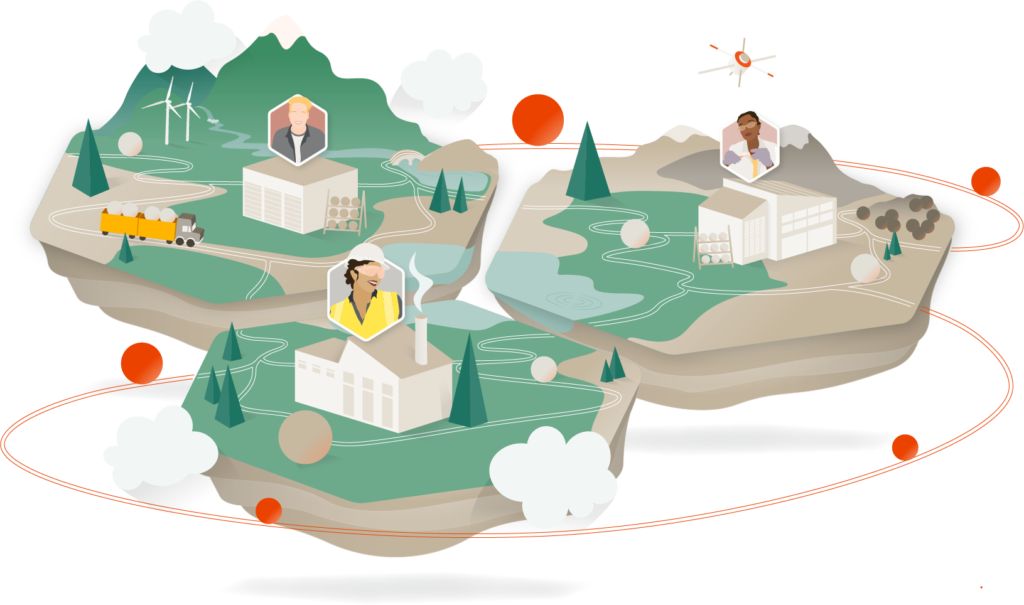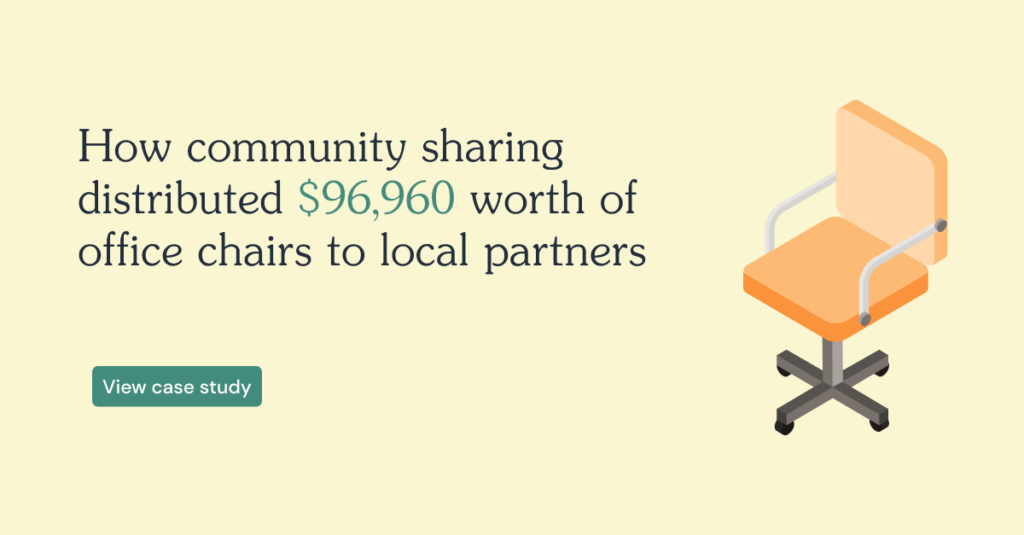Circular Economy Benefits
Rheaply puts reuse on the table for every organization.
Circular economy benefits
The ‘economy’ is a broad term that refers to the resources involved in the process of producing and consuming various goods or services – economies can be large or small, based on region, nationality, or the scope of an industry or specific market. While each individual economic system may vary drastically, there are certain traits of economies that observers can identify to measure the efficiency or correlated effects of how money is being spent and what kinds of products or services consumers are buying. The kind of economy for our primary focus within this post is that of a circular economy – a system predominantly marked by an emphasis on things like renewable energy, recycled materials, and reducing overall waste.
Several contributing factors to the increasing popularity of circular economy theories – many of which allude to the needless waste that can sometimes accompany consumer culture.
Although there may be some discrepancy between academics about how many there are in total, 4 principles of circular economy include tenets like relying on recycling, reusing, remanufacturing, and producing durable products that can be refurbished rather than replaced.
There are numerous environmental benefits of circular economy practices – some of these circular economy benefits, especially for the environment, are reduced emissions and reduced carbon footprints through the use of more recyclable or renewable materials and resources. There are dozens of other benefits of circular economy practices – for businesses and for customers and communities alike.
The circular economy and benefits for society are numerous and far-reaching, but how does a circular economy work? Within a circular economy, materials used in the process of manufacturing goods or providing special services are reused, refurbished, or sourced from sustainable organizations whenever possible. Because raw materials are a limited resource, the price for raw materials is subject to change rapidly if demand suddenly increases or decreases.
Circular economy benefits for business
There are also several small and large circular economy benefits for business enterprises. In fact, the circular economy’s impact on business operations can provide a wide array of benefits and the potential for more economic and efficient use of limited resources. Some of the most apparent and recognizable benefits are facets like waste reduction or elimination as well as the reduction of carbon emissions.
Many circular economy materials will come from sustainable sources, recycled materials, or other similar, greener origins. Circular economies can also drive innovation and enhance economic growth by improving the supply chain process, working with vendors invested in sustainable practices. Consumers generally prefer products that have less negative effects on the environment. More intelligent allocation of and use of materials not only helps preserve finite resources, but it also helps protect numerous natural resources like natural forests, rivers, lakes, and biodiverse ecosystems.
Some examples of circular economy principles in practice include reducing rampant, shortsighted consumption of limited raw materials. And materials that are necessary for production – as well as the products themselves – are put to use for longer, and are refurbished or recycled instead of thrown out in order to reduce as much waste as possible. Circular economies offer a variety of pathways forward that can create new, greener jobs, and there are innumerable savings opportunities when it comes to reusing and remanufacturing, especially in industries like plastics, textiles, agriculture, and more.
Not only that, but the social benefits of circular economy practices are innumerable and widespread. In a circular economy, the use of refurbished or recycled materials virtually eliminates the need for a new production of single-use plastics, synthetic goods, and other products that can be potentially hazardous if disposed of improperly. Reducing waste and pollution helps protect the longevity of biodiverse ecosystems, but it also helps mitigate risk factors that can negatively impact human health.
Disadvantages of the circular economy
As with virtually any philosophy of economics, there are a handful of disadvantages of circular economy practices as well. For instance, in many cases, it may be easier for an existing organization to transition away from a linear economic model towards a circular model instead of starting from scratch within a circular economic framework.
In addition to the substantial economic barriers with regard to financing circular economic initiatives, there is little in the way of substantive government regulation that empowers businesses and organizations to maximize the potential positives of a circular economic system.
Sometimes, laborers simply lack the necessary technical skills to help employers transition toward a circular economic model. In other cases, there’s simply too much waste within a system that becomes too cumbersome to recycle or reuse meaningfully. Recycling technology has come a long way in just the past several years, but we still have a long way to go before many recycling enterprises have the technology and capability to increase and optimize our recycling efforts. These disadvantages are just some examples of the challenges of circular economy undertakings.
The objectives of circular economy enterprises are clear: reduce waste by reusing or recycling materials through multiple cycles, preserve the security and stability of environments rich in natural resources, and lower the potential for pollution during the manufacturing, storing, and distribution processes.
No economic system devised by human beings is completely immune from challenges or obstacles, but that does not undermine the value of many circular economic principles. There are economic benefits to circular economics and there are socio-environmental benefits as well. Reduced plastic waste, for example, saves money and resources within the plastics industry and helps support other industries affected by plastic waste, like offshore fisheries and tourism, to name a few.
Circular economy examples

While circular economies may be increasing in popularity, they are far from new – the history of circular economy ideas dates back to the middle of the twentieth century. Circular economy case studies have shown that companies are highly interested in transitioning towards circular economic models. Many consumers prefer brands committed to sustainability initiatives and other circular principles that help reduce pollution and overall wastefulness.
The components of circular economy enterprises provide sustainable and renewable paths forward to help fuel growth and maintain healthy revenue streams. Some circular economy examples include manufacturers that prioritize products designed to be durable and reusable. In the technology industry, for instance, many consumer products are designed with planned obsolescence in mind so that the consumer will have to buy a new product in a relatively short timeframe. Within a circular economy, technological devices would be designed more robustly so that they could be repaired and reused with much greater ease and efficiency.
Some circular economy companies include European auto manufacturer, Groupe Renault, which has taken strides towards making the manufacturing process more circular. This is done by increasing recycled plastic use, reusing electric batteries, and remanufacturing certain vehicle parts like transmissions and turbos; there’s also H&M Group’s commitment to becoming more circular and climate positive before 2050. H&M Group’s efforts include bolstering circular supply chains and circular customer journeys to help reduce textile waste. Even if a company has not committed fully to achieving circular economic status, there are still a wide array of benefits of integrating circular aspects into the manufacturing process.
Circular economic practices have the potential to replace many linear economic ones, especially as more businesses invest in decarbonization efforts, switching to renewable sources of energy, reusable materials, and other climate- and environmentally-conscious methodologies.
Circular economy sustainability
While there are several ways to utilize circular economy sustainability, the terms themselves (“circular economy” vs “ sustainability”) are generally not interchangeable. A circular economy refers to an entire enclosed system in which the emphasis is on recycling efforts and minimizing or eliminating the potential for waste and toxic or hazardous byproducts. Sustainability, on the other hand, refers to the ability to maintain a set status or level indefinitely; in environmental or economic contexts, sustainability refers to preserving natural resources and biodiversity in order to preserve ecological homeostasis. In other words, sustainability plays a major role in many circular economies, but sustainability is not the sole pillar of a circular economy’s foundation.
Circular economy sustainability examples might include processes where products are manufactured durably so they can be repaired or reused instead of replaced outright. More sustainable efforts might involve sourcing manufacturing components and materials from local businesses or other businesses that have meaningfully committed to sustainability initiatives.
Circular economy and sustainability strategies exist to reduce unnecessary waste within a system or set of systems, so it’s important to understand your company’s circular economy and sustainability impact factor. As more industries begin their efforts to decrease their negative impacts on the environment, more companies may turn to the sustainable circular economy model.
With fewer finite resources and with the increasing severity and frequency of natural disasters exacerbated by symptoms of a changing climate, the benefits of the circular economy become ever more evident. Circular economies can provide alternatives to wasteful practices that have financial advantages as well as socioenvironmental advantages. By transitioning away from linear practices, circular alternatives offer solutions to help reduce waste, pollution, and potentially the irretrievable loss of Earth’s natural biodiversity.


